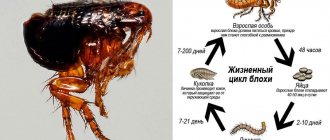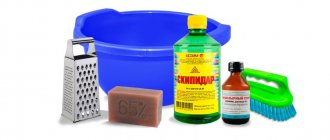Often unexpected guests appear in the country house or garden - pests. It can be quite problematic to remove them, and they create serious problems - they can eat sprouts, destroy root crops, and they can also move into your home.
Rats reproduce quite quickly, so the problem must be addressed immediately after detection. Small holes in the beds will indicate that this is where the dwelling is located. It can go about 35 cm deep. Getting the animals can be difficult.
How to get rid
There are various methods for eliminating such neighbors from the garden. The main thing is to remember that if there are pets or children walking on the site, then you need to protect them as much as possible from the influence of rodents. You can try to scare away rats or get rid of them altogether. Repellent methods:
- Pungent smell. Vishnevsky's ointment is diluted in a container with water and the ground where the animal's burrow is supposedly located is used. They cannot stand such a smell, so they can either change place or leave.
- Needles. Spruce needles scattered along the route of pests will help repel them for a while, since they touch their paws and injure them.
- Ash. You can also sprinkle paths with ash. It burns the animal's skin, so it will retreat.
Before moving on to methods of extermination, it is best to try to scare away the rats. The animals can go to a safe place and no longer cause trouble.
Features of the earth rat
This pest is an excellent swimmer, so it can easily move in any conditions in search of food. In the autumn, he moves closer to country houses and household plots, where he can find food for himself without much effort. The ground rat is distinguished by enviable fertility: the female gives birth to her own kind 5 times in 1 year, in quantities from 2 to 14 tiny living creatures. 2 years after birth, young water voles can already reproduce. Therefore, the difficulty of combating this pest also lies in fertility.
Given favorable conditions, the ground rat is capable of increasing its population to catastrophic proportions. In appearance, the earth rat is a fluffy and very attractive animal that belongs to the order of voles. This pest grows up to 25 centimeters in length, with the tail taking up half of its length. The animal weighs about half a kilogram and has a very variable color - from black to gray, with and without stripes of light colors.
The pest eats various root crops, tops, leaves, and also gnaws the bark of young trees. In addition, the water rat catches frogs, eats shellfish and hunts voles. In the summer, the rodent stays close to bodies of water, where there is enough food for them. Closer to winter, the pest moves closer to humans, settling in gardens or outbuildings. The water vole easily climbs trees in search of chicks and bird eggs.
The pest lives in hard-to-reach places, which are characterized by debris of old branches or unnecessary things. Among other things, the water vole builds pantries underground, where it stores food for future use. Therefore, its burrows represent many passages that are directed to pantries, to the nest, as well as to entry and exit points. She stores for the winter everything she has access to: potatoes, beets, carrots, grain, legumes, etc. The burrows are located at a depth of about 20 cm.
I
The most popular and effective way to get rid of any pests is poison. Poisoned baits are scattered in the habitats of pests, as well as in their burrow. Choose:
- "Difa-Neo" based on grain;
- “Difa” is a paraffin briquette.
6 ways to use old window frames in your country house
Why is the ground rat dangerous?
Since this harmful animal is highly fertile, it is not difficult to guess how much harm just one water vole colony can cause. A ground rat, if it settles in a country house or on a personal plot, is capable of eating everything that grows in the garden, as well as what is in a person’s home. If there is not enough food for them, then they begin to enter the house, feeding on cereals, bread crumbs, sausage, cheese, etc. In short, everything that a person eats, an earth rat will eat. In addition to the fact that it can eat part of the harvest, it spoils fruit trees and other green spaces, as it makes passages in the ground, violating the integrity of the root system. This leads to a partial loss of the harvest of fruits and berries, and often, after the active life of this animal, fruit trees and shrubs simply dry out.
In addition to cultivated plants, the earth rat spoils beds with vegetables and root crops, as well as flower beds, since the underground passages of the pest are located at a depth of no more than 20 cm. In Holland, this animal is considered the main enemy of tulip plantations. Under certain conditions, the ground rat can also destroy weeds. The process of harvesting grain crops is also becoming noticeably more complicated. Animals gnaw the bark from young trees of fruit and berry crops, which causes significant damage to garden plants.
In this regard, you should pay attention to the fact that if at least one individual is detected, you need to immediately consider tactics and strategies for combating such a pest. A pair of earth rats can quickly create their own colony, numbering dozens of living creatures, ready to swallow everything that gets in their way.
Garden head - How to get rid of underground rats
Distribution and reproduction
The ground rat can be found in the European part of the country, the Caucasus, and Siberia (except for the regions of the Far North). A large number of rodents are concentrated in the south of Siberia and Central Asia.
It chooses damp places to live - along the banks of reservoirs, swamps and damp meadows. When the population is high, it can colonize gardens, fields and orchards.
During floods, it migrates, moving to drier and more convenient places to live.
REFERENCE! Often lives in populated areas, settling in personal plots and creating passages in thin walls and under the floor.
In the southern regions, under comfortable conditions, the ground rat can reproduce all year round. In other places, the process occurs from spring to autumn, two or three times.
The number of individuals in the litter depends on the life span of the animal - the older the female, the more cubs she can bear . The offspring are bred underground, in a separate equipped place.
When they reach the age of one month, the young begin to live independently.
Under optimal conditions, the number of ground rats increases several times, and their number can reach 400 animals per hectare of field.
Preventive measures
The following preventive measures will help prevent the appearance of earth rats on the site:
- timely weeding, removal of plant debris (fallen leaves, rotten fruits, dead wood);
- keeping the area clean (there should be no garbage or food waste);
- deep digging of beds and row spacing in the fall after harvesting;
- regular inspection of the area for the presence of burrows;
- the compost pit should be equipped in the far corner of the site, away from the beds.
When harvesting, it is very important to check that there are no root crops left in the ground, and that there are no remains of herbs and vegetables in the beds. A cat or dog periodically walking around the area will also help protect against rodents.
Lifestyle
The rodent is active all year round , spending almost all its time underground in winter. By time of day, the greatest activity is concentrated in the evening and at night.
It emerges from the hole only for a short period of time, moving away a short distance - as a rule, while eating plants on the ground.
In summer during the greatest heat and in winter it clogs burrows from the inside . The earth produced by digging passages is thrown to the surface, forming small, flat piles of varying sizes and at varying distances from the exit point.
Underground passages are located 10-15 cm from the ground surface . The nest usually consists of an extensive network of labyrinths, a nesting chamber and several storehouses with supplies.
REFERENCE! If moles live near the habitat of an earthen rat, then they can use the moles’ ready-dug passages to quickly get to the roots and tubers.
How to distinguish rat holes from mole holes?
You can detect the presence of earth rats by the presence of holes in the garden. But besides water voles, burrows can also belong to other animals. Most often, you can find passages in the ground made by moles. Understanding who exactly is digging the ground is not so difficult. At the exit from the wormhole, the earth lies in a triangular mound, and near the exit from the rat’s home there is a flat mound. In addition, unlike a mole, a vole disguises its exit with leaves, twigs and debris.
Rat hole
Traps
The first device with which a person fought rodents was a trap or trap. Modern devices of this type have already been transformed into more efficient devices.
You can make traps yourself or buy ready-made traps. Once there, the rat dies immediately. But recently, the “smart” animal has learned to bypass them.
In order to not give rodents a chance to appear at your dacha, you need to work hard when harvesting, completely clean the entire area, and not leave any leftover food for them. Loud sounds also scare away animals; you can make a device out of tin cans, which will play a role in the wind.
But in general, if an unexpected guest appears, you must immediately begin to fight him. After all, this will help to avoid serious problems in the future.
Useful tips
Professional products for fighting the rat family are produced in different variations. You can offer poison-treated grain to pests, or use gel bait. It contains a potent poison, flavorings to attract the attention of animals, and flavoring additives. It must be placed near the minks.
With the constant invasion of voles in gardens, it is necessary to ensure the tightness of the area. Build a fence around it with a cemented base. The animal will not be able to make moves in the cement.
Tags: earthen, rat, vegetable garden, sign About the author: admin4ik
Biological method
Many people know that rodents are afraid of cats, but not everyone knows that the worst enemies of rats are also dogs of certain breeds.
Of course, not every cat will be able to cope with a large rat, the length of which is 25 cm, and the weight reaches almost 0.5 kg. In addition to this, certain breeds of “fluffy dogs” are needed, because pets living in comfortable apartment conditions are unlikely to show a desire to hunt, because they do not suffer from an acute feeling of hunger.
If we take into account that not all cats have a strong hunting instinct, it becomes clear that furry pets are unlikely to be good helpers in the fight against hated pests. It is better to rely on a yard cat in this matter, which is usually hungry.
Ideally, you should get a dachshund; this breed will do an excellent job of eliminating rats. The dog may not want to eat rodents, but catching them will definitely not cause difficulties. Get a dachshund and see for yourself how willingly it will chase rats.
Professional repeller
Currently, electromagnetic repellers are very popular. Its action is aimed at the psyche of rodents. A certain frequency of sound is not perceptible to humans and domestic animals; it affects rodents with great force. The devices operate on mains power or batteries. Each model has its own radius of influence. Rodents are literally going crazy. 2-3 days of continuous influence and they will begin to leave the area. According to reviews, the devices are quite effective indoors, but are less effective outdoors. Another point is that it is unknown how far the pests will go.
Perhaps they will settle in the neighborhood and return again after a while.
Differences from other rodents
The ground rat differs from the gray rat in having soft fur and a shorter tail without ring scales.
They differ from moles in the smaller size of their underground passages, which also have an irregular shape. Also, rats do not hibernate in winter.
The tracks are similar to the prints of gray voles, but have a longer step length - 6-8 cm.
To compare the ground rat with other rodents, we suggest reading about pied voles, the mole vole, the red and banked voles, and the root vole.
Traditional methods
These methods are usually safer. This should include rags moistened with kerosene or gasoline, and plants with a pronounced aroma. Folk remedies can be used without fear of harming household members or pets.
Traps
Modern devices of this type are quite effective devices that perform their functions remarkably well. For rats, it is better to use arc traps. When caught in the traps, the hated pests die instantly. However, regardless of the effectiveness of the devices, rats can bypass them if at least one individual has fallen into the trap.
Appearance of the animal
The appearance of the animal is more similar to mice than to rats:
- rounded body, large head with a blunt muzzle;
- small round ears, barely noticeable;
- the eyes are round and large enough;
- massive paws with long toes and slightly rounded claws.
There are still differences between rats and mice. The rodent's body length is about 22 cm. The tail is narrow, long, covered with thick, hard hair. There is a small brush at the tip. The coat is soft, but there are long, stiff fibers throughout the body. In winter, the cover becomes denser and fluffier. The weight of the animal is about 350 g.
https://www.youtube.com/watch?v=i4mxY6U7hr0
The abdomen is dirty white. Available in red or completely black. The yellow earthen rat looks like a hamster. The only thing that gives it away is its long tail and the absence of a light stripe along the back. A photo of an earthen rat is presented below.
Earth rat
Effective methods
Just one pair of individuals is capable of quickly multiplying and creating a whole colony of their own kind, which will sweep away everything that gets in their way. The fight against earth rats can consist of the following actions: baiting with chemicals, catching or expulsion. The technique depends both on the individual preferences of the owners and on the size of the population. Not every owner of a vegetable plot or garden plot will agree to treat the area with pesticides.
This approach makes sense, since chemicals can harm not only rodents, but also people. If the number of earth rats is small, then you can use traps. Many people use baits containing rat poison. Modern humane methods include exposure to ultrasound or special devices that create soil vibrations. In most cases, pests leave the problem area.
Description of the pest
Field rat in the garden.
The ground rat is actually a mouse, a water vole, which is actually a member of the hamster family. This mammal is called a rat because of its appearance. It is slightly larger than all its relatives, but smaller than the muskrat, the largest of them.
The water vole has a large body, a short muzzle and short legs. The tail can be 2/3 of the length of the rat’s entire body, the maximum size of which reaches 25 cm. The fur can differ in shades depending on the region and period, from brownish-gray to pure black. There is also a small amount of fur on the tail.
You can get to know the water vole better in this article.
Life activity
The ground rat has some qualities that you should be aware of. They damage lands and even agriculture on a large scale. Water voles reproduce quickly and are very fertile. They have 5 cubs in each offspring, and they give birth 2-3 times a year.
They are absolutely gluttonous . They eat almost everything they come across. These are small fish or shellfish, frogs or even chicks. They do not shy away from seeds and small root vegetables; they love bark and roots. On hungry days, they do not disdain even their small relatives, field mice.
Water voles are hyperactive . They are active both day and night. They are equally agile underground, in trees and in water. They can drag all the food that can be preserved into their pit to lie there during the hungry period.
Colonies and individual animals carry various diseases that can be dangerous for children and animals. They carry viruses and diseases, many dangerous diseases. Moreover, infection occurs directly through a bite, but also through feces and contaminated dust.
Pests, although active, are also cunning. For example, they get along well with moles. Earth rats love to use their passages and even steal supplies.
Rats get along with moles.
Effective remedies for mice in the country
You can fight the scourge in a variety of ways. It all depends on the pest population, the capabilities and desires of the owners. Proponents of humane methods prefer devices and traps that guarantee the safety of animals. For those who want to get rid of it quickly and for sure, more radical measures are suitable.
Choose one of several methods:
- mechanical:
- chemical;
- electronic;
- folk remedies.
It is recommended to combine several manipulations at once for effectiveness. This is especially true in the presence of large colonies of rodents, when a serious fight awaits.
The best and proven remedy for mice in the country is pesticides. As a rule, their action is designed to have a cumulative effect, with mice dying within a few days.
The most common:
- "Zookoumarin";
- "Barrier";
- "Krysin";
- "Fumifox";
- "Ratindan";
- "Anti-rodent";
- "Nutcracker";
- "Storm";
- "Rat Death";
- "Mortorath";
- "Rat Killer";
- "Tsunami".
Poisons are divided into three types: inorganic, biological, anticoagulants. The drugs are available in different packaging:
- briquettes;
- granules;
- corn;
- powder.
When using pesticides, safety precautions should be observed. Place in places where mice congregate so that they always have access to such a “meal”. It is worth considering the fact that rodents, when decomposing, emit a specific foul odor and are a source of infections. Therefore, when using poisons, it is necessary to regularly inspect the premises in order to dispose of dead animals. In order not to feel unpleasant odors, it is worth choosing a drug from among chemical compounds containing the substance brodifacoum. Dead animals eventually become mummified and do not cause discomfort to the owners.
Modern technologies allow the use of the latest methods. The use of ultrasonic repellers is considered the most humane method. Using such devices, you will not have to carry out the corpses of mice and smell the disgusting smell.
Electromagnetic and combined repellers are also available for sale. Depending on the modification, they have different ranges. The main advantages of such universal devices:
- continuous operation;
- environmental friendliness;
- safety for people and pets.
The only requirement is the availability of electricity. If for some reason there is no light at the dacha, there is no point in purchasing devices. For such cases, there are battery-powered devices.
Electronic traps are equipped in such a way that when mice get inside they die from an electrical discharge. Such devices operate without recharging for a long time.
Mousetraps are a traditional and common method of rodent control. Of course, the sight of a dead mouse in a device is not for the faint of heart. But the effectiveness of the method is confirmed by many years of experience. Products with a strong aroma that attract pests are used as bait:
- bread;
- cheese;
- salo.
But it is worth considering that if the owners are not at the dacha, the benefit of mousetraps will be insignificant. Especially if the rodent population is large enough. Modern industry produces a huge number of modifications of traps made of wood, metal and plastic. More humane devices are becoming popular - “live traps”, when a mouse falls into a trap and does not die. If desired, she can be released into the wild away from home.
Another effective and budget-friendly method is sticky traps. Mice react to the scent added to the adhesive base. The paws stick, and the rodents have practically no chance. You can purchase special glue in tubes. It is applied independently to any surface for the same purpose.
Sticky rodent trap
If you cannot solve the pest problem yourself or simply do not have time for this, you should contact the appropriate services. Organizations specializing in rodent extermination will inspect the facility and offer options.
Deratization is carried out by specialists using modern equipment, using the latest drugs. Deadlines and tasks are determined, and the safety of people and pets is guaranteed.
The order of the years of the Rat according to the elements
| January 31, 1900 - February 18, 1901 | Metal Rat |
| February 18, 1912 - February 5, 1913 | Water rat |
| February 5, 1924 - January 23, 1925 | Wood Rat |
| January 24, 1936 - February 10, 1937 | Fire Rat |
| February 10, 1948 - January 28, 1949 | Earth Rat |
| January 28, 1960 - February 14, 1961 | Metal Rat |
| February 15, 1972 - February 2, 1973 | Water rat |
| February 2, 1984 - February 19, 1985 | Wood Rat |
| February 19, 1996 - February 6, 1997 | Fire Rat |
| February 7, 2008 - January 25, 2009 | Earth Rat |
| January 25, 2022 – February 11, 2021 | Metal Rat |
| February 11, 2032 – January 30, 2033 | Water rat |
| January 30, 2044 – February 16, 2045 | Wood Rat |
Rat - male yang principle, sign of the first triangle, element of Water
The rat is a symbol of realism, cunning, and high adaptation to external conditions. She is gifted with various talents and loving. Those born in the year of the Rat are distinguished by their bright appearance, artistic talent, cunning and perseverance. The Rat is smart, educated, strives for success in society and material well-being. Rats are charming and have natural magnetism. They are very sociable, have a special charm, love and know how to charm. Disadvantages include greed, anxiety for no reason, and nervousness. Autumn and winter Rats are prone to hoarding. Spring and summer Rats love to squander money, are more frivolous, and can live at the expense of others.
Positive qualities of the sign
Insight, intuition and the ability to adapt to any conditions allow the Rat to achieve success where others retreat. Great lovers, Rats value romance. These are not boring partners, sensual and attractive. Those born under this sign have pronounced charisma, the gift of eloquence and are artistically gifted. Meticulous, persistent, ambitious. They love to communicate, are smart and charming.
Negative qualities of the sign
Cunning makes the Rat a manipulator by nature, and a cynical attitude towards life contributes to unreliability. She remembers insults for a long time, is inclined to take revenge on offenders, and can show ruthlessness and amazing stubbornness. Prone to all types of bad habits. He intrigues and gossips with gusto.
In the year of the Rat it is good to save money, move to a new place of residence, and improve the quality of life. During this period, it is easier to get used to new conditions. This year is favorable for arranging a new home, nesting, and renovation. There is a lot of intrigue and rivalry in the environment. This is a period of searching for love and serious feelings. A good year for Rats, Oxen, Dragons, Monkeys and Pigs. A difficult year for Tigers, Rabbits, Horses, Goats and Roosters. Neutral year for Snakes and Dogs.
Chemicals
A few days after laying out the bait, it must be checked.
Rat poison affects different organs of animals: breathing, bones, digestive, nervous or circulatory systems. Many products also have mummifying properties, thanks to which corpses do not decompose and do not stink.
Using chemical poison is easy:
- You need to find rodent burrows or their habitats;
- Put edible bait there (food or water mixed with poison) or leave ready-made products;
- After a few days you need to check the amount of bait. To become poisoned, rats must eat a certain amount of poison (the exact amount is indicated on the specific product). If they eat less, there is a high probability that the rodent's body will adapt to the poison;
- After the first wave of deaths, you need to change the bait and poison
"Storm" is ready for use
- “Nutcracker”: is a dough-like mass of blue or red color, which must be placed in containers and placed near the holes. The container is necessary to eliminate human odor. The poison acts for 4-8 days and shows excellent results: about 90-100% of individuals die. The average price of a 10 gram package is about 100 rubles*.
- “Storm”: produced in the form of ready-made granules and briquettes of different weights. The advantages of the poison include a special bitterness (rats do not feel it, and children and pets will not be able to eat too much) and mummifying properties. The price of a package of 4 briquettes of 4 grams is 40-60 rubles.
- “Zookoumarin NEO”: available in the form of ready-made grains of purple or pink color and powder for mixing with food or water. It is a slow-acting poison: rats die within 1-1.5 weeks. The cost of a bag of grain weighing 100 grams is 20-30 rubles.
- “Rat Death No. 1”: This is an extremely effective but toxic remedy that looks like a paste-like substance packaged in separate bags. It must be placed in separate containers, avoiding contact with skin or food. Death occurs 2-3 days after the poison is ingested; the colony dies out completely within a week. The average price for 100 grams is 50-60 rubles.
- “Efa”: produced in the form of briquettes and grains. When ingested, rats experience internal bleeding, after which the individual dies within 3 days. “Efa” can be used as a prophylactic and left in hard-to-reach places: the product does not release toxins into the air, although you should not touch it with your hands. The average price of 100 grams of grains is 50 rubles.
We suggest you read: How to poison rats in the countryside
Effective methods of dealing with earthen rats
The fight against earth rats on a personal plot or in a country house involves several tactical approaches - catching pests, baiting with chemicals or expulsion. Which of these methods to choose depends on several factors, including the number of animals, as well as personal attitude towards one or another method of control. It is quite natural that almost all owners of vegetable gardens and garden plots do not recognize poisons and other chemicals. This is understandable, since poisons can harm not only pests, but also humans themselves, as well as pets. In addition, there is a category of people who have a negative attitude towards inhumane methods of struggle that involve the destruction of living beings, regardless of whether they bring harm or benefit.
Biological method of control
Almost everyone knows that cats are considered the natural enemies of rats and mice, but not everyone knows that dogs, especially some of their breeds, are also enemies of rodents. Naturally, not every cat is able to cope with an adult ground rat, which weighs almost half a kilogram and reaches a length of 25 cm. In addition, special breeds of cats are needed, and those pets that are kept in greenhouse conditions in many houses and apartments are unlikely to want to hunt rats and mice, since they do not lack food. And if you consider that not all cats have a developed hunter instinct, then you can’t really rely on cats in the fight against rodents. An ordinary yard cat can cope with such a task better than a pet with a long pedigree.
There is a breed of dog, the dachshund, that can cope with the task of catching earth rats. Whether the dachshund will eat them or not is a second question, but catching them and putting them in one place is easy. Therefore, the ideal option is to buy a dachshund and watch it chase pests.
Humane methods for getting rid of earth rats
Many owners prefer humane control methods that are aimed at expelling pests from their garden plots, as well as repelling rodents. Regardless of which method of control this or that owner is a supporter of, it is imperative to get rid of the earthen rat. Nowadays, manufacturers have come up with a number of devices, and people have come up with a number of methods that make it possible to expel them from the site without destroying the animals.
For example, you can use:
- Ultrasonic repeller as an effective device that affects the behavior of rodents such as mice and rats. The devices are inexpensive and compact in size. The device works on the principle of generating ultrasonic waves, which humans do not perceive, but some animals perceive these signals. Depending on the level of this signal, mice and rats develop a feeling of fear and anxiety. As a result, they try to leave the range of this device. Unfortunately, rodents begin to get used to these signals, so no one can give a 100% guarantee.
- Flooding of holes . Since the water vole is not afraid of water, it is not in danger of death. Despite this, she will leave the uncomfortable area.
- Smoking pests out of holes. These animals have a highly developed sense of smell, so they cannot tolerate strong, pronounced aromas. They will immediately smell the burning substance and try to escape. In addition, they cannot stand the smell of wormwood and mint, so they can also be used as a deterrent.
- Planting black elderberry . The roots of this plant are a source of cyanide, which saturates the soil. They have a detrimental effect on rodents. At the same time, black elderberry does not have a negative effect on plants growing nearby, and even helps to increase productivity.
To successfully fight an earthen rat, you need to know the peculiarities of its behavior. As you know, there are other ways to humanely treat pests. If you use your wits, you can cope with pests without outside help.
Destruction by toxic substances
Some owners prefer not to stand on ceremony with pests and resort to the use of chemical rodent control agents. Currently, this is not a problem, since a huge number of broad-spectrum chemicals are available on the household market. Some substances cause attacks of suffocation, others paralysis, and some drive you crazy. Although chemicals are highly reliable, their use requires equally great care . Firstly, all medications must be used strictly according to the instructions. It is important to remember that they are poisonous and you can get seriously poisoned.
Folk remedies
As a rule, folk recipes do not contain toxic components, and therefore they can be used in any area without fear of poisoning, both people and animals. Sometimes it is enough to add plants with a strong smell, such as mint, lemon balm, St. John's wort, chamomile, etc., into the holes of earth rats. The same results can be obtained if you use rags soaked in kerosene, gasoline, grease, etc.
Using traps
Traps are the first device that humans used to catch rodents. Nowadays, simple traps have been transformed into more advanced and effective devices that cope with their functions. Arc traps are more suitable for catching earth rats. It is possible to use homemade traps or store-bought ones. When pests fall into such traps, they die immediately. Despite the high efficiency of modern traps, pests have learned to bypass them if at least one adult is in the trap.
Homemade rat trap or how to catch a rat\homemade rat-trap











